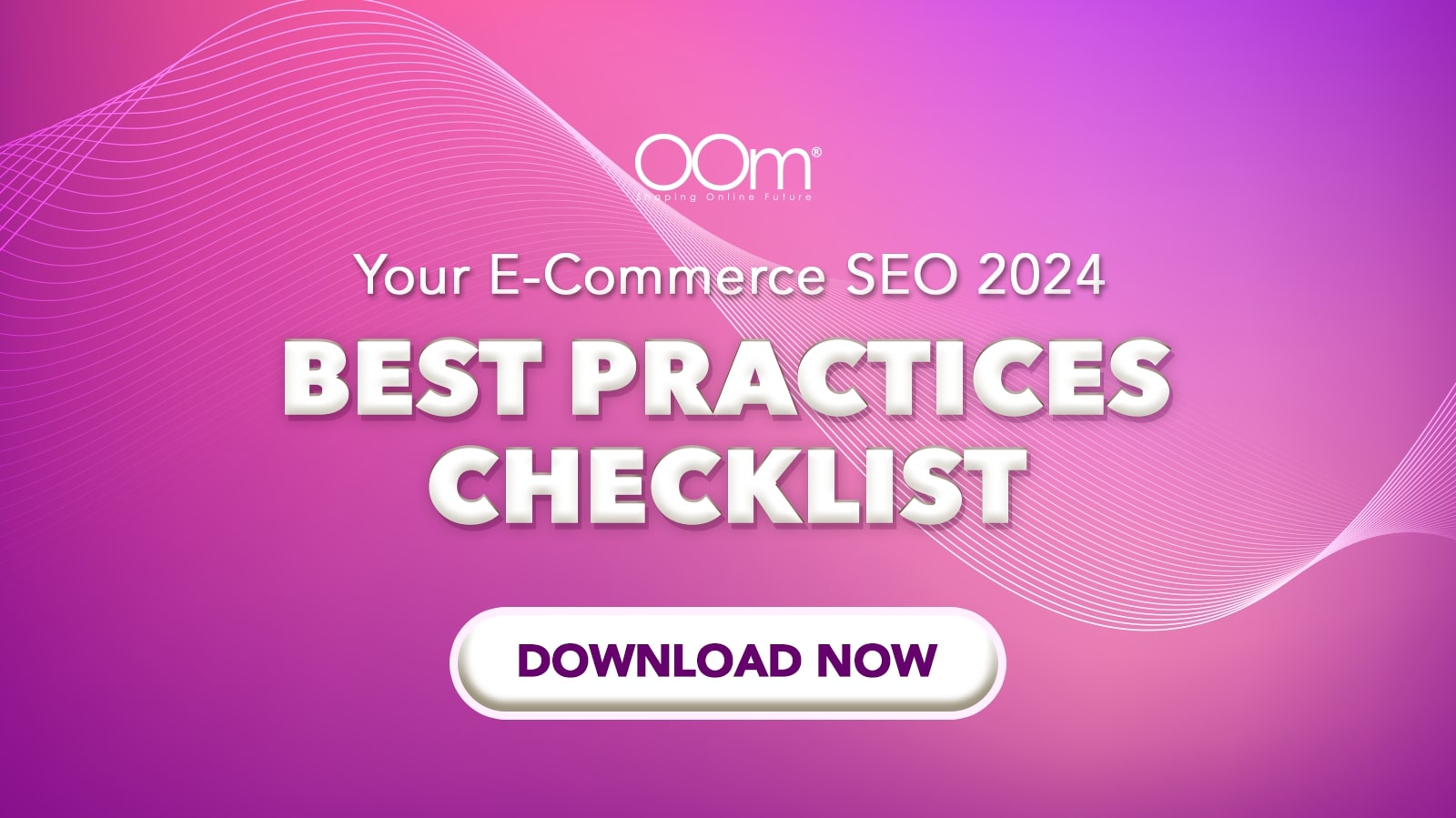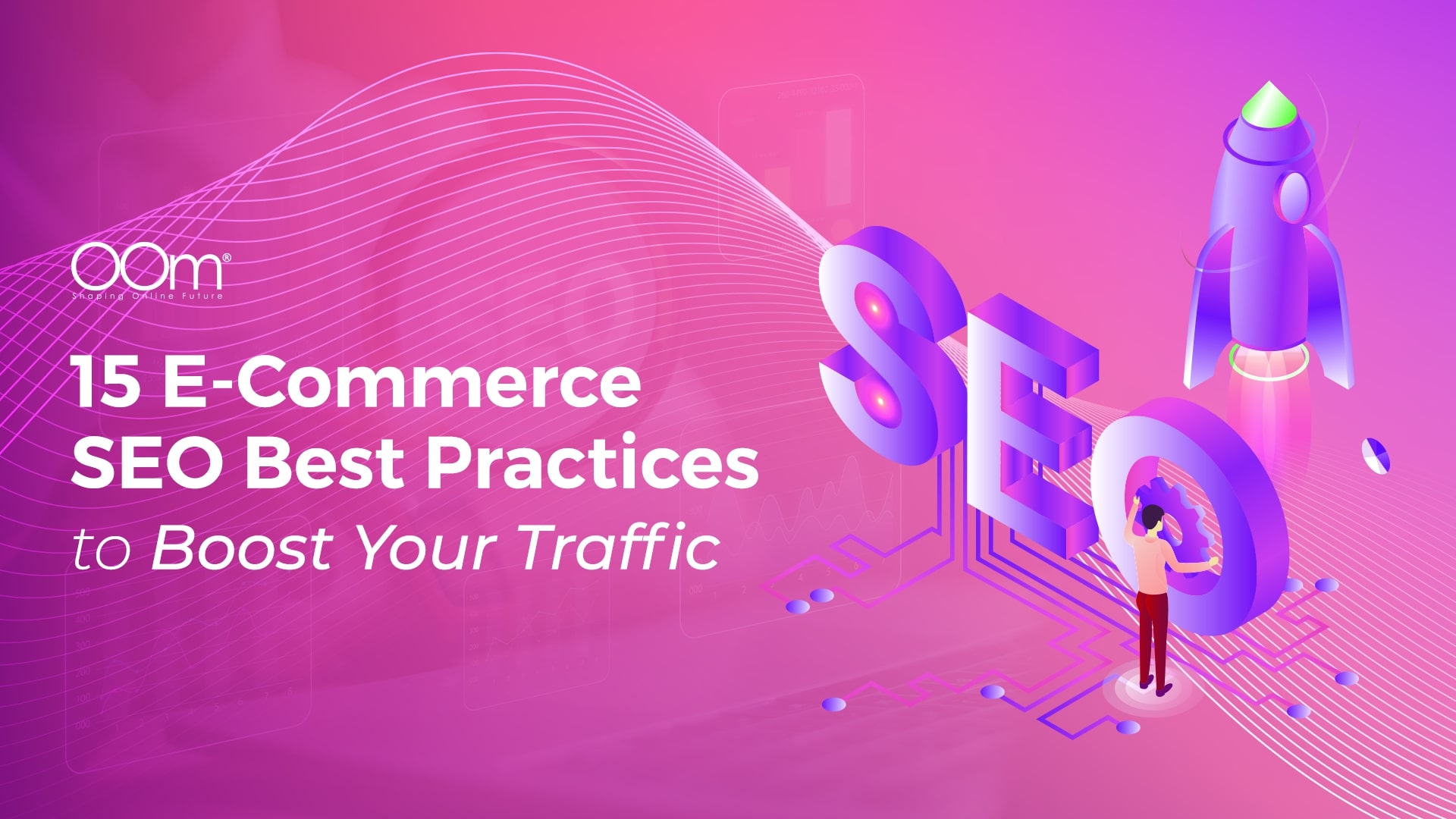
Imagine a virtual storefront that not only attracts visitors but also converts them into loyal customers — that is the magic of SEO in the e-commerce realm. But what exactly is e-commerce SEO and why does it wield such transformative power?
The answer lies in the undeniable harmony between visibility and success. In a world where consumers increasingly turn to search engines to discover, compare, and purchase products, the significance of being found cannot be overstated.
Furthermore, the benefits of mastering e-commerce SEO best practices are manifold. It is the gateway to increased visibility, heightened credibility, and amplified profitability. By aligning your digital strategy with the principles of SEO, your business can transcend into a destination that not only meets but exceeds the expectations of your target audience.
Download Our Free Checklist Here
Before we dive into the intricacies of e-commerce SEO, equip yourself with our comprehensive checklist, your roadmap to SEO supremacy. Download your free e-commerce SEO best practices checklist here!
The Essential E-Commerce SEO Best Practices
1. Keyword Research as the Foundation of Visibility
A keyword is more than just a string of characters; it is a reflection of user intent. Each keyword encapsulates the desires, questions, or needs of your potential customers. Hence, it is important to decipher this language of intent and strategically integrate it into your digital content to enhance your e-commerce site’s visibility.
- Relevance is Key: Begin by understanding your products and services. What terms would a potential customer use to find them? These are your primary keywords. Ensure they align seamlessly with your offerings.
- Long-Tail Keywords: Do not underestimate the power of long-tail keywords — phrases that are more specific and typically longer. While they may have lower search volumes, they often translate into highly targeted traffic, increasing the likelihood of conversion.
- Competitor Analysis: Peek into the keyword strategies of your competitors. Identify gaps and opportunities to position your business uniquely. Tools like SEMrush, Ahrefs, or Google Keyword Planner can be invaluable allies in this quest.
Learn more: Keyword Research Guide: Identify The Right Keywords To Optimise Your Digital Marketing Campaigns
Some tools you can use to help you perform keyword research for your e-commerce website include:
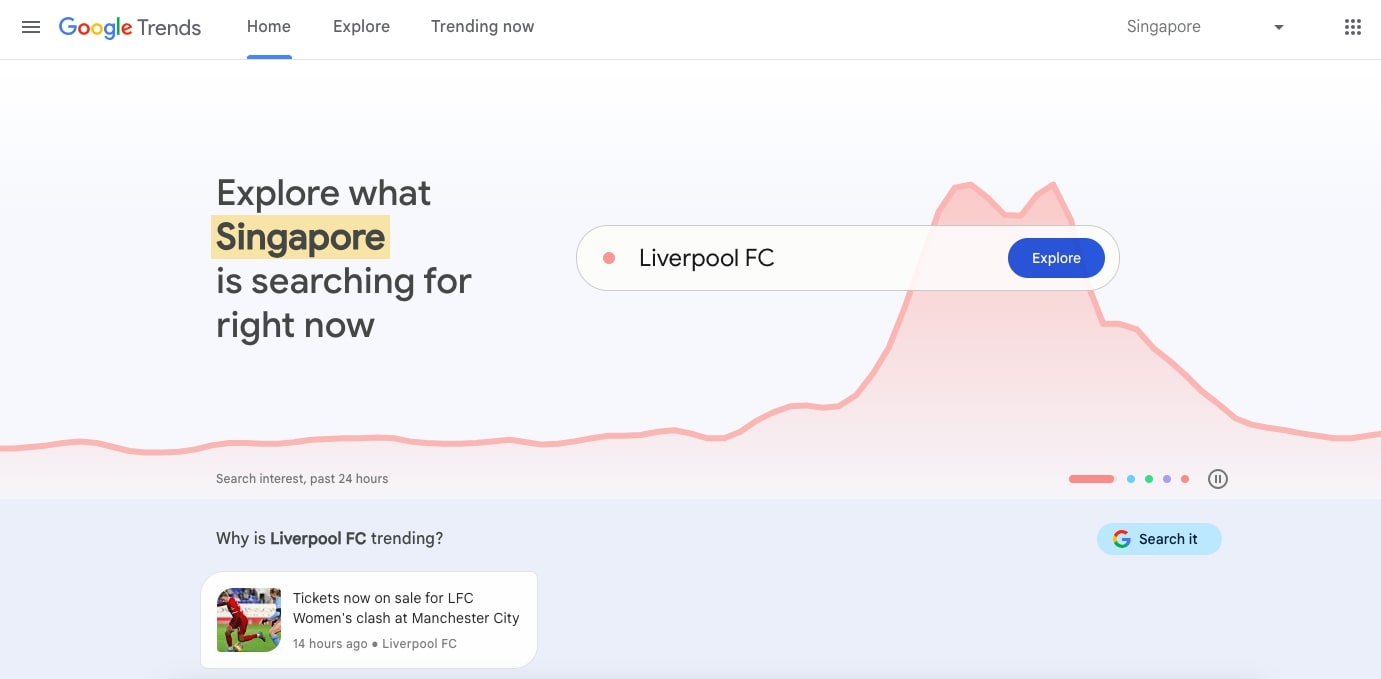
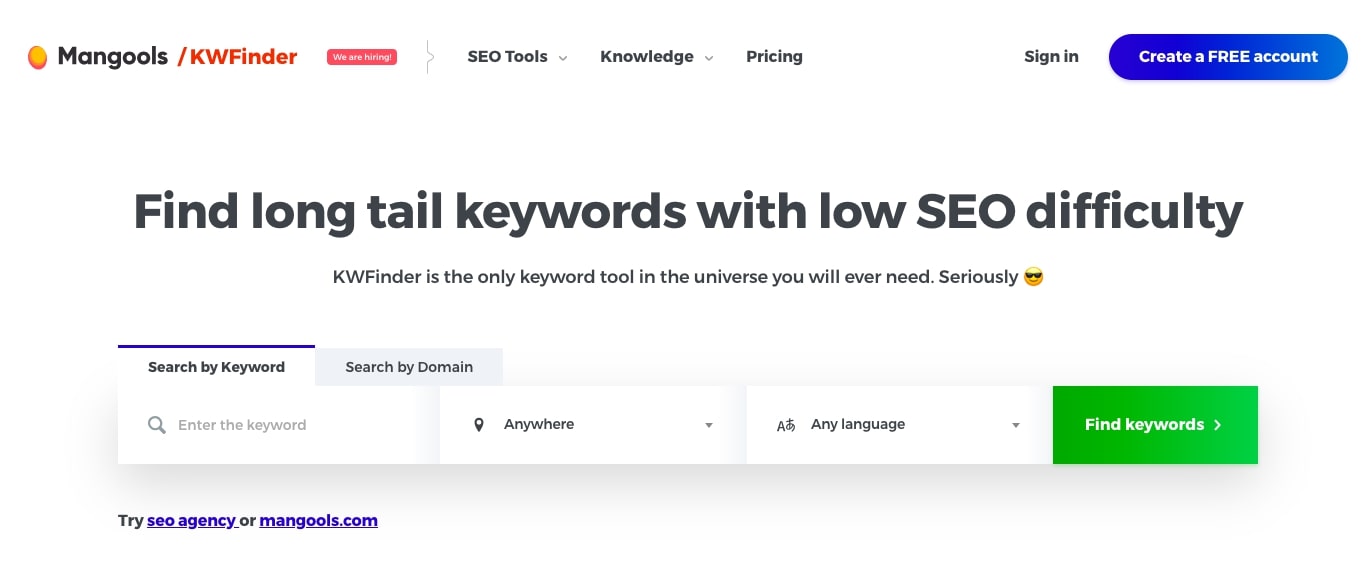
2. Meta Titles and Descriptions as Your Digital Storefront Signs
Consider the meta title as the headline that beckons users from the search results page. It is an e-commerce SEO best practice that lets you condense the essence of your page in a captivating and keyword-rich snippet.
- Clarity and Relevance: Craft titles that clearly convey the content of your page. Ensure they align with the user’s intent and contain relevant keywords, signalling to search engines that your content is a valuable match.
- Compelling Copy: While keywords are essential, do not forget the human touch. A compelling meta title should not only be optimised for search engines but also entice users to click through. Consider it your first chance to make a lasting impression.
- Length Matters: Keep it concise and within the recommended length (typically around 50-60 characters). This allows your title to be fully displayed in search results, preventing truncation.
If the meta title is the headline, the meta description is the teaser — a brief narrative that lures users to explore further.
- Concise Summation: Summarise the content of your page by highlighting key selling points, unique offerings, or special promotions to capture attention.
- Call to Action (CTA): Prompt users to take action. Whether it is to shop, learn more, or discover exclusive deals, a well-placed CTA can be the nudge users need to click through.
- Keyword Harmony: Incorporate relevant keywords naturally into your meta description. While meta descriptions do not directly impact rankings, they do influence click-through rates, making keyword inclusion important for user comprehension.
- Unique Descriptions: Avoid duplicate meta descriptions across pages. Each product or category deserves its own distinctive narrative to stand out in the digital crowd.
3. Resolve Technical SEO Issues for a Smooth Operation
Search engines rely on crawling to discover and index your content. Technical SEO ensures that your website’s structure facilitates efficient crawling, allowing search engines to delve into the depth of your digital content.
Slow-loading pages not only frustrate users but also signal to search engines that your site might not provide an optimal user experience. Therefore, it is vital to optimise images, leverage browser caching, and employ content delivery networks (CDNs) to fine-tune your site’s tempo.
And with the rise of mobile searches, a mobile-friendly design is no longer a luxury — it is a necessity. Google prioritises mobile-friendly websites in its rankings, acknowledging the prevalence of mobile devices in users’ online journeys.
Learn more: What Should Your Website Auditing Checklist Have?
4. Proper URL Structure Is Your Roadmap to Relevance
A well-organised URL structure is one of the key ways to create an SEO-friendly e-commerce website. It acts as a digital GPS, helping users understand their location within your website. Clear, concise URLs enhance the overall user experience by providing a roadmap for navigation.
Search engine crawlers use URLs to understand the structure and hierarchy of your website. A proper URL structure also makes it easier for crawlers to navigate and index your content, contributing to improved visibility in search engine results.
- Clear Hierarchy: Design your URL structure to reflect the logical hierarchy of your website. A clear hierarchy not only aids users in understanding the relationships between pages but also assists search engines in indexing content efficiently.
- Descriptive Keywords: Incorporate descriptive keywords in your URLs to communicate the content of the page to users and align with the language that search engines use to understand and rank your content.
- Hyphen Separators: Use hyphens (-) as separators in your URLs. Hyphens are more readable for both users and search engines compared to underscores or no separators. For example,
product-category/electronics
is more readable thanproduct_category/electronics.
- Short and Simple: Keep your URLs short and straightforward. Avoid unnecessary parameters or complex strings of characters. A concise URL is not only more user-friendly but is also easier for search engines to interpret.
- Avoid Dynamic Parameters: Minimise the use of dynamic parameters in your URLs, such as session IDs or query strings. Static, clean URLs are preferred for both user experience and SEO.
- Canonicalisation: Implement canonical tags to address duplicate content issues. It helps search engines understand the preferred version of a page when multiple URLs lead to similar or identical content.
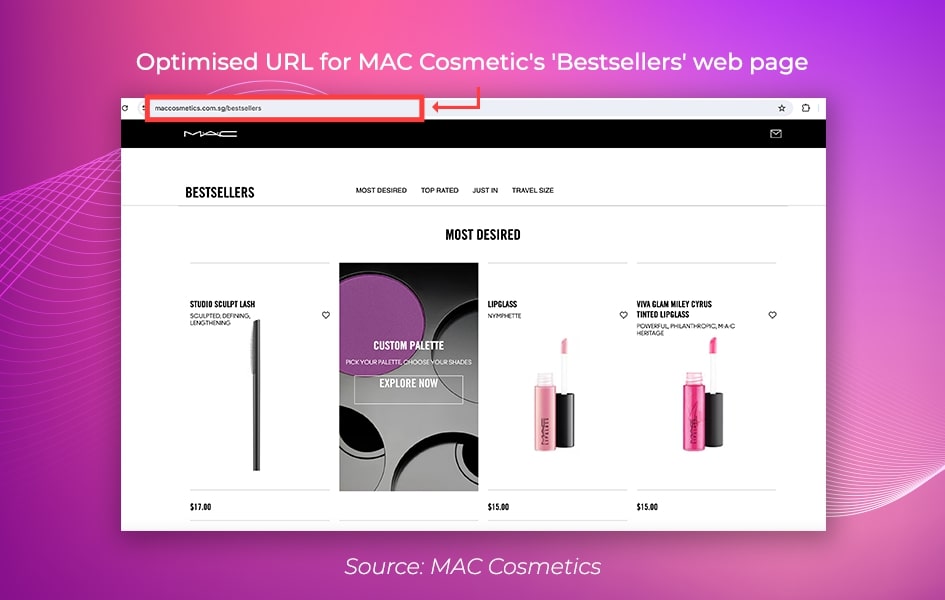
Here is a good example of an optimised URL from MAC Cosmetics. This beauty retail brand optimised its URL by being concise about the content of its web page, which helped ease the search process of buyers.
With proper URL structure, search engines can also index the web page properly, helping it to appear to potential customers searching for the exact or related keywords.
5. Rename Alt Text and File Name of Images
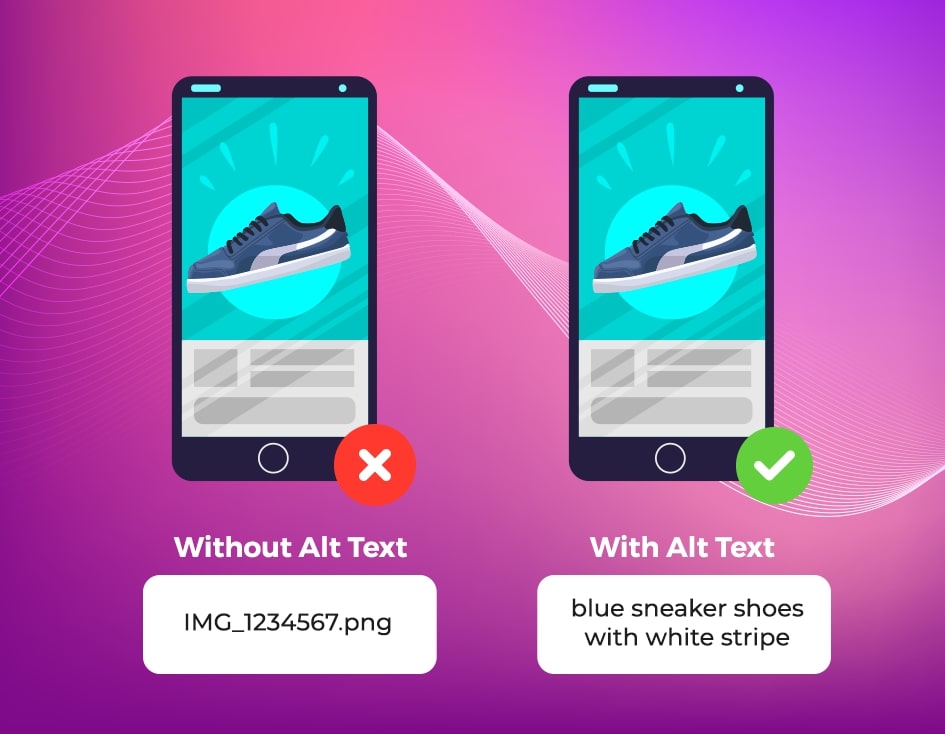
Renaming the alt text and file names of images is one of the boxes to tick in your e-commerce SEO checklist that enhances accessibility and user experience.
- Descriptive and Concise: Alt text should clearly convey the content and context of the image in a few words. For example, instead of
IMG12345.jpg,
opt forred-high-heels-product.jpg.
- Incorporate Keywords Naturally: If applicable, include relevant keywords in your alt text. However, check that it sounds natural and aligns with the content of the image. Prioritise clarity and user understanding over keyword stuffing.
- Avoid Generic Filenames:
IMG_001.jpg
does not provide any context. Instead, rename your image files to reflect their content. For instance, changeDSC56789.jpg
tobeach-sunset-paradise.jpg.
- Use Hyphens as Separators: When renaming files or alt text, use hyphens (-) rather than underscores or spaces. Search engines interpret hyphens as space, improving the readability of your text.
- Reflect Image Content: The alt text and file name should directly reflect the content of the image. This not only aids search engines in understanding your content but also ensures that users receive accurate and relevant information.
Learn more: Image Title Tags And Image Alt Tags
6. Avoid Duplicate Content as Uniqueness Trumps Repetition
Avoiding duplicate content is a foundational principle in the realm of e-commerce SEO best practices and content marketing. Uniqueness not only enhances search engine rankings but also contributes to a positive user experience, ensuring that your digital presence stands out amidst the vast sea of information.
- Create Original and Value-Added Content: Prioritise content creation that offers fresh perspectives, insights, or solutions, setting your digital assets apart from the crowd.
- Canonicalisation: Implement canonical tags to indicate the preferred version of a page, especially when similar or identical content exists across different URLs. This helps search engines understand which version to prioritise in search results.
- 301 Redirects: When consolidating or merging content, use 301 redirects to guide users and search engines from the old URL to the new, authoritative one. This ensures a seamless transition and preserves the SEO authority of the original content.
- Utilise Noindex and Nofollow Tags: For pages that should not be crawled or indexed, such as duplicate or non-essential content, utilise noindex and nofollow tags. This signals to search engines not to include these pages in search results, maintaining the visibility of primary content.
- Consistent Internal Linking: Employ consistent internal linking practices to guide users and search engines through the content hierarchy of your website. Clear structure and hierarchy reduce the likelihood of unintentional duplication and enhance crawlability.
- Regular Audits and Monitoring: Conduct regular content audits to identify and address instances of duplicate content. Monitoring your digital landscape ensures that any unintentional duplication is promptly rectified, maintaining the integrity of your content.
7. Start a Blog Page as a Content Hub for Engagement
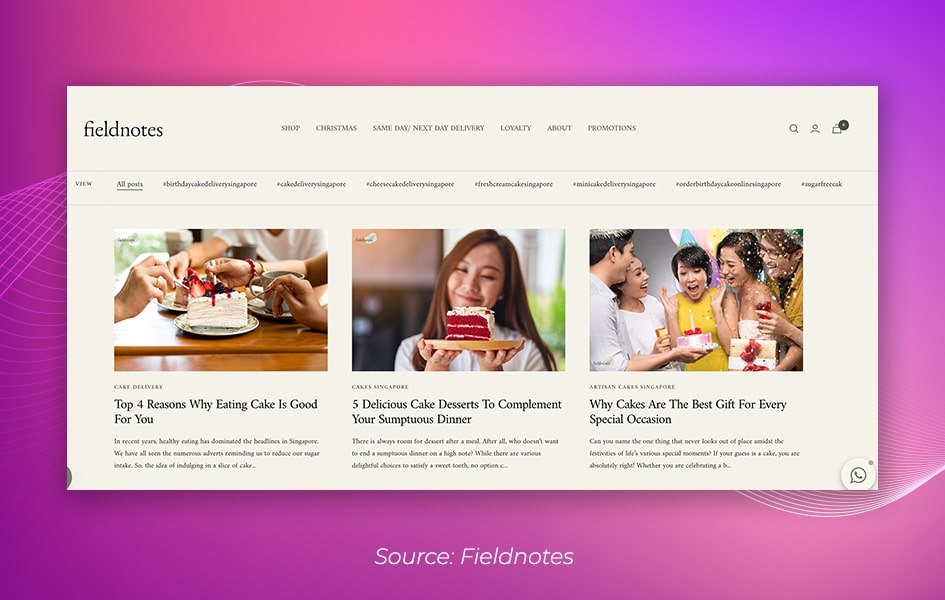
A blog serves as a content hub, a dynamic space where you can engage, educate, and connect with your audience. By creating informative and educational content, you position your brand as an authority in your niche, instilling trust and credibility among your audience. It also allows you to diversify your content formats. From how-to guides and product tutorials to industry trends and customer stories, you can tailor content to meet the diverse preferences of your audience, ensuring a captivating and varied user experience. Moreover, each blog post is a new opportunity to target relevant keywords, attracting organic traffic to your website. Regular, high-quality content signals to search engines that your site is active and valuable, contributing to improved SEO rankings.
Learn more: The Importance Of Blogging For An E-commerce Website
8. Utilise Internal Links to Weave a Web of Connectivity
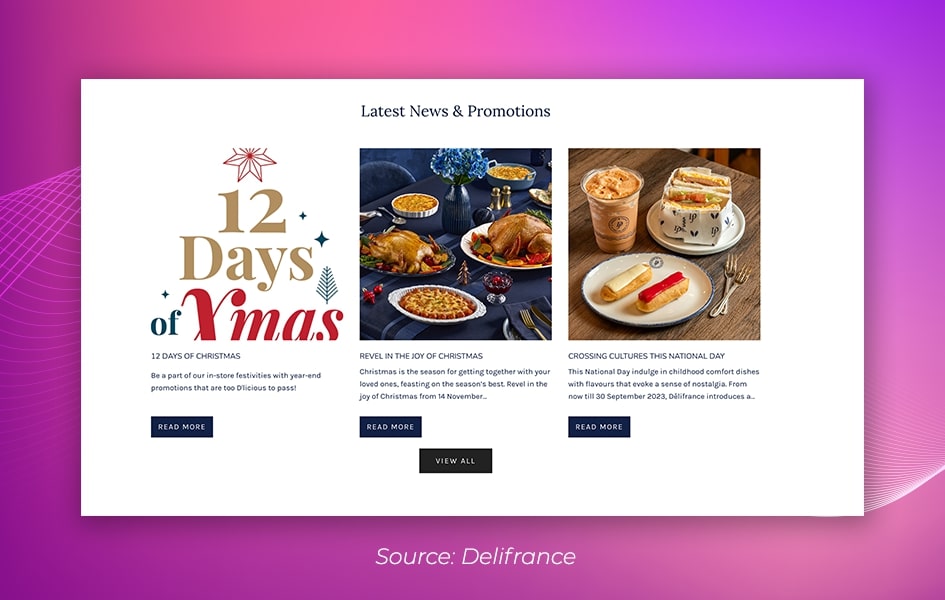
Beyond mere navigation tools, internal links are strategic connectors that guide users through the diverse corridors of your content, fostering engagement, improving SEO, and enhancing the overall user experience. This is one of the best e-commerce SEO practices that encourage users to delve deeper, discover more, and engage with a diverse range of offerings.
- Contextual Relevance: Make sure that internal links are contextually relevant to the content they are embedded in. Link to pages that offer additional information, elaboration, or related insights, creating a natural and logical flow for users.
- Anchor Text Optimisation: Craft descriptive and keyword-rich anchor text for your internal links. The anchor text provides users and search engines with a clear understanding of the linked content, contributing to improved SEO rankings.
- Hierarchy and Structure: Plan the hierarchy and structure of your internal links. Create a logical flow that mirrors the way users navigate and consume information. Well-organised internal linking enhances both user experience and search engine crawlability.
- Consistent Linking: Be consistent in your internal linking practices. Create patterns that users can recognise, such as linking product pages from blog posts or guiding users from category pages to specific product details. Consistency breeds familiarity.
- Deep Linking: Embrace deep linking by connecting to not only your homepage or main pages but also to specific, relevant subpages. Distribute link equity across various levels of your website, ensuring that every corner is accessible and valued.
9. Encourage Customer Reviews Because Proof Matters
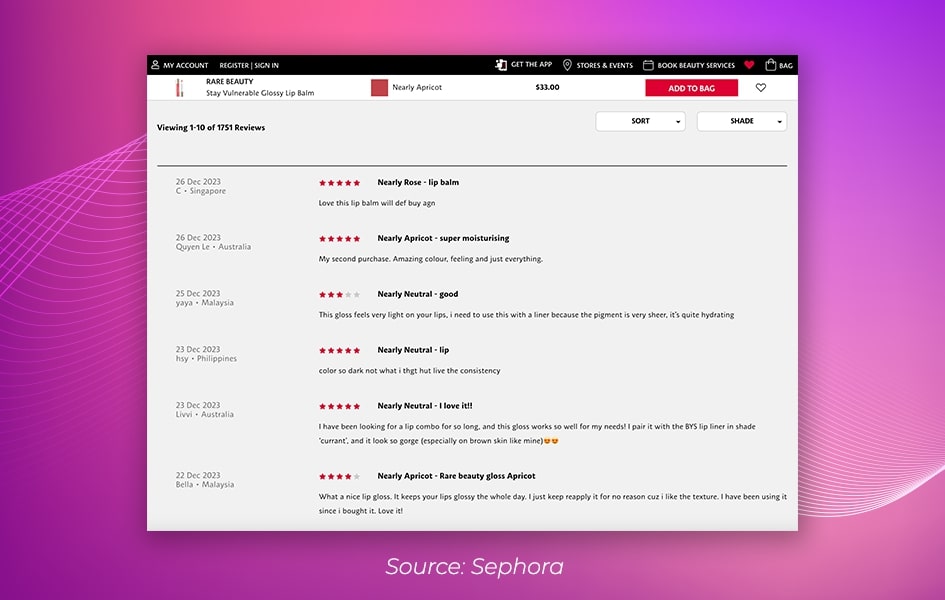
Far more than mere testimonials, these reviews hold the power to influence purchasing decisions, build credibility, and significantly impact your e-commerce website’s SEO standing. They lend authenticity to your products and services, providing potential customers with insights from real experiences. Additionally, search engines like Google value fresh, relevant, and user-generated content, and customer reviews check all these boxes.
Here are some tips to encourage and leverage customer reviews:
- Make It Effortless: Simplify the review submission process by integrating user-friendly review forms and encouraging customers to share their experiences through follow-up emails or prompts on your website.
- Reward Engagement: Consider offering incentives, such as discounts or loyalty points, to customers who take the time to leave reviews. This not only boosts participation but also fosters a sense of appreciation and loyalty.
- Respond to Reviews: Actively engage with your customers by expressing gratitude for positive feedback and addressing concerns in a constructive manner. This builds a sense of community and demonstrates your commitment to customer satisfaction.
- Display Reviews Strategically: Showcase reviews prominently on your product pages. Consider implementing a review carousel or highlighting select reviews to provide a snapshot of customer sentiment. Rich snippets, which display star ratings and other review details directly in search results, can further enhance visibility.
Learn more: Customer Reviews: How To Use Them In Your Marketing Campaigns
10. Simplify Website Architecture for User-Friendly Navigation
Like well-laid pathways through a bustling marketplace, user-friendly navigation ensures that visitors can effortlessly explore, discover, and engage with your products. However, it is not just for your audience; it is also one of the e-commerce SEO best practices. Clear, logical structures make it easier for search engine crawlers to index your content, contributing to improved SEO rankings. A streamlined architecture reduces the likelihood of visitors bouncing off your site due to confusion. Lower bounce rates signal to search engines that your content is relevant and engaging, positively impacting your SEO.
- Craft an Intuitive Map: User-friendly navigation begins with clarity. Imagine your website as a vast marketplace. Users should intuitively understand where to find what they seek. Clear, concise navigation menus and labels act as signposts, guiding visitors through the digital aisles.
- Streamline the Journey: Organise your content in a logical hierarchy. Just as physical stores group similar items together for convenience, your website should present a structured flow that mirrors user expectations. Categories and subcategories should align with the way your audience thinks about your products.
- Speak Your Users’ Language: Labels should resonate with your audience. Instead of industry jargon, use terms that your customers are likely to search for. Your navigation should be a user-friendly conversation, not a coded language.
Here is an excellent example from Adidas to give you an idea of what a sitemap should look like on an e-commerce website:
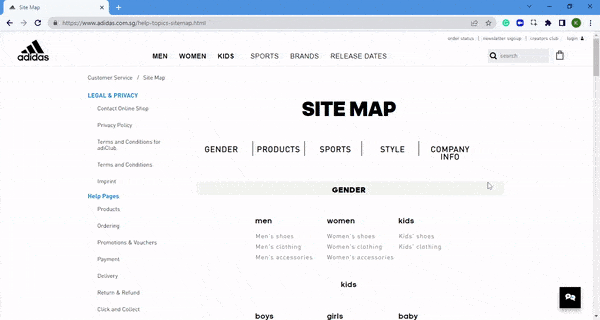
11. Responsive Website to Adapt to Every Device
A responsive website is designed to seamlessly adjust its layout, content, and functionalities based on screen size and device characteristics. Whether a user is accessing your site on a smartphone during a commute or on a desktop at home, a responsive design guarantees an optimal viewing experience.
- Mobile-First Approach: Start by crafting a user-friendly experience for smaller screens, and then progressively enhance the design for larger devices. This makes sure that your website remains functional and engaging, even on smartphones with limited screen real estate.
- Flexible Images and Videos: Implement responsive images and videos that can scale appropriately based on the device’s screen size. This prevents images from appearing too large or too small and maintains a visually pleasing and cohesive layout.
- Touch-Friendly Navigation: Design touch-friendly navigation elements for mobile users. Consider the ease of tapping and swiping gestures, ensuring that users on touchscreen devices can navigate your site effortlessly.
Learn more: Mobile SEO: A Guide To Optimising Your Website For Mobile Phones
12. Customised 404 Error Page to Turn Setbacks into Opportunities
Encountering a 404 error is like stumbling upon an unexpected detour but a well-crafted and customised 404 error page can be an opportunity to turn setbacks into engaging interactions.
- Clear Navigation: Direct users back to the homepage, main categories, or a search function, offering alternative routes to explore.
- Search Functionality: Integrate a search bar on the 404 page. Users may have landed on the error page while searching for specific content and a search function empowers them to find what they are looking for without additional hassle.
- Link to Popular Content: Feature links to popular or relevant content on your website. This not only keeps users engaged but also guides them to key areas of interest, increasing the likelihood of continued exploration.
- Contact Information: If applicable, include contact information or links to customer support. This reassures users that help is available, fostering a sense of trust and reliability.
13. Product Descriptions Can Elevate the Shopping Experience
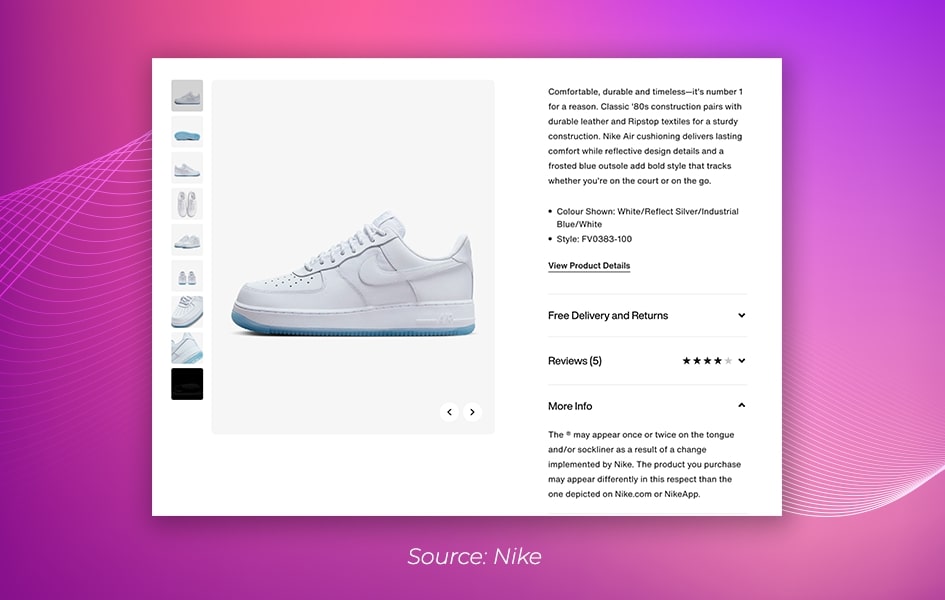
While basic details like dimensions and specifications are essential, product descriptions are an opportunity to weave a narrative around the product. They can be used to engage customers with stories that highlight features, benefits, and the unique value your product brings. A well-crafted product description instils trust and confidence in potential buyers. It addresses their concerns, answers questions preemptively, and positions your product as the solution they have been searching for.
- Focus on Benefits, Not Just Features: Help customers envision how the product will enhance their lives or solve a specific problem. Paint a vivid picture of the value they will gain.
- Inject Personality: Infuse your brand’s personality into product descriptions. Whether it is a touch of humour, a dash of sophistication, or a warm and friendly tone, let your brand’s voice shine through. This creates a connection with customers and makes the shopping experience more memorable.
- Use Descriptive and Evocative Language: Choose words that evoke emotions and stimulate the senses. Instead of generic terms, opt for descriptive language that paints a detailed and enticing image of the product. Help customers visualise the experience of owning and using it.
- Optimise for SEO: Incorporate relevant keywords in your product descriptions for an SEO-friendly e-commerce website. This ensures that your products are discoverable when potential customers search for related terms, driving organic traffic to your site.
- Format for Readability: Use bullet points, headings, and concise paragraphs to make the content scannable. Most online shoppers skim product descriptions, so make it easy for them to grasp the key points quickly.
14. Leverage Collection Pages to Organise for Impact
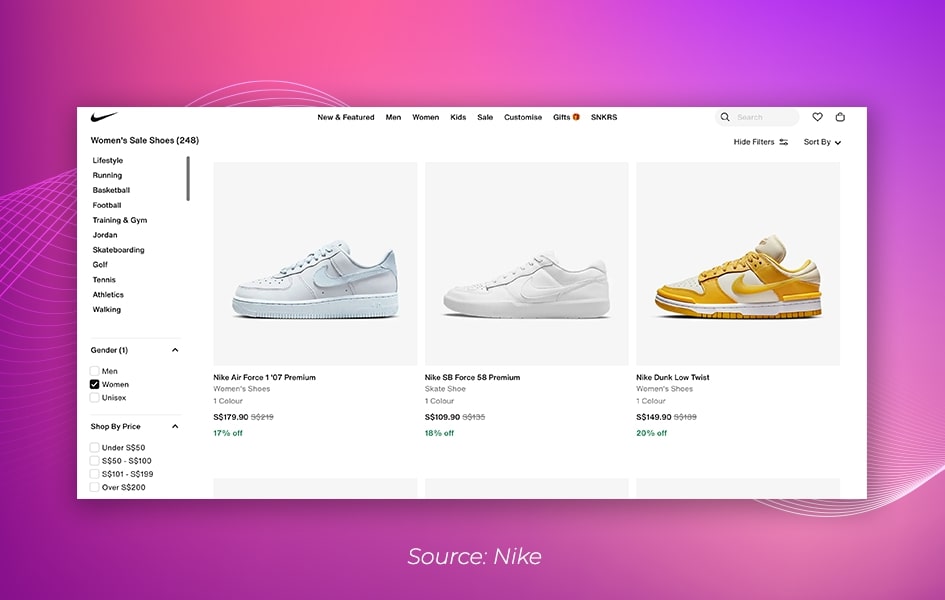
Collection pages are curated displays of products grouped together based on a common theme, category, or attribute. They provide users with a cohesive and visually appealing overview of a specific product range, making it easier for them to explore and find what they are looking for.
- Thematic Grouping: Organise collection pages thematically. Group products based on categories, seasonal themes, trends, or any other criteria that resonate with your target audience. Thematic grouping provides users with a clear and engaging narrative as they explore the collection.
- Clear and Intuitive Navigation: Implement filters, sorting options, and navigation tools that empower users to refine their choices based on factors like price, popularity, or relevance. A seamless exploration experience enhances user satisfaction.
- Visual Consistency: Maintain visual consistency across collection pages. Consistent imagery, layout, and design elements create a cohesive brand identity and make it easier for users to recognise and engage with your curated showcases.
- Compelling Product Thumbnails: Optimise product thumbnails to be visually enticing. High-quality images, appealing product angles, and consistent image styles contribute to the overall visual impact of the collection, enticing users to explore further.
- Incorporate Descriptive Copy: Include descriptive copy or captions for each collection, providing users with context about the theme or purpose of the curated showcase. This helps set expectations and guides users to collections that align with their interests.
- Featured Products: Highlight featured or bestselling products within each collection. This draws attention to key offerings and provides users with a quick glimpse of the standout items within the curated showcase.
15. Local SEO to Conquer the Local Market
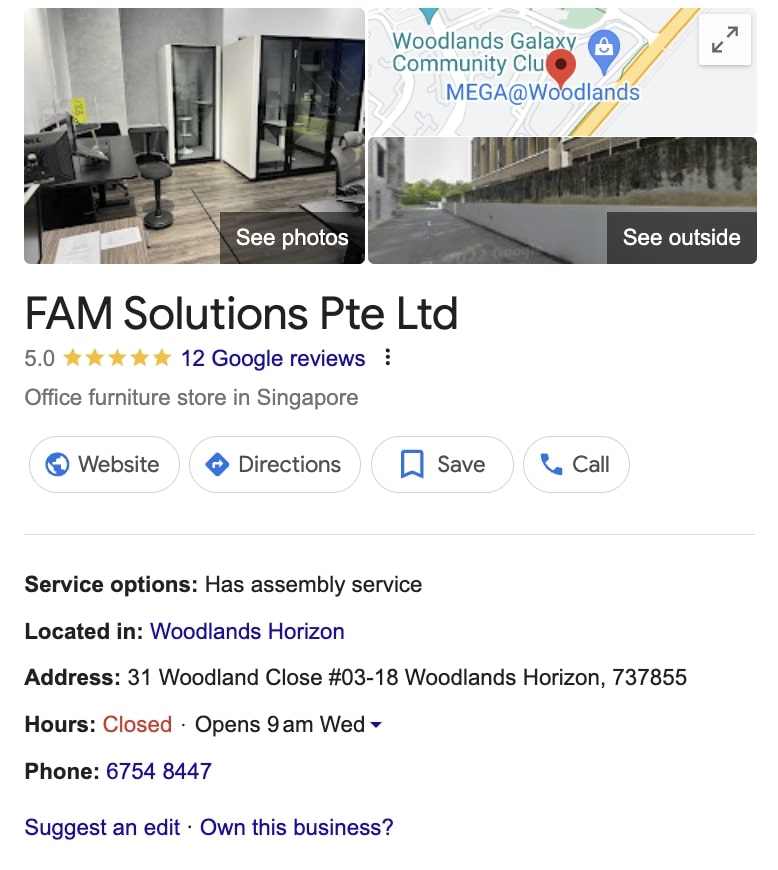
Local SEO empowers businesses to optimise their online presence for local searches, connect with nearby customers, and secure a prominent place in local search engine results. This includes searches with local intent, such as “near me” queries, and ensures that businesses appear when local customers are actively looking for products or services.
- Google Business Profile (GBP) Optimisation: Claim and optimise your GBP listing. Check that your business name, address, phone number (NAP), and other relevant information are accurate and consistent. Complete all available fields, including business hours, categories, and a compelling business description.
- Local Keyword Optimisation: Integrate local keywords naturally into your website content, meta tags, and headings. This helps search engines understand the geographical relevance of your business and improves your chances of appearing in local search results.
- Online Reviews: Encourage and manage online reviews on platforms like Google and other industry-specific review sites. Positive reviews not only build trust with potential customers but also contribute to your business’s visibility in local search results.
- Local Citations: Make sure that your business information is consistent across online directories, local business listings, and data aggregators. This consistency reinforces the accuracy of your business details and strengthens your local SEO efforts.
- Localised Content: Create localised content that speaks to the interests, needs, and events relevant to your local audience. This could include blog posts, articles, or promotions that showcase your business’s connection to the community.
- Local Link Building: Build local backlinks by collaborating with local businesses, sponsoring local events, or participating in community initiatives. Local links from reputable sources can enhance your business’s authority in the local context.
Discover the top 10 SEO agencies in Singapore that specialise in optimising your website for local SEO.
Frequently Asked Questions About E-Commerce SEO Best Practices
Download Our Free Checklist Here
SEO Excellence in Every Click
Mastering these 15 e-commerce SEO best practices positions your business for digital triumph. Download the free checklist, implement these strategies, and witness the transformation of your online presence.
Not sure how to start? Get in touch with our team at OOm — your journey to SEO excellence starts here!
